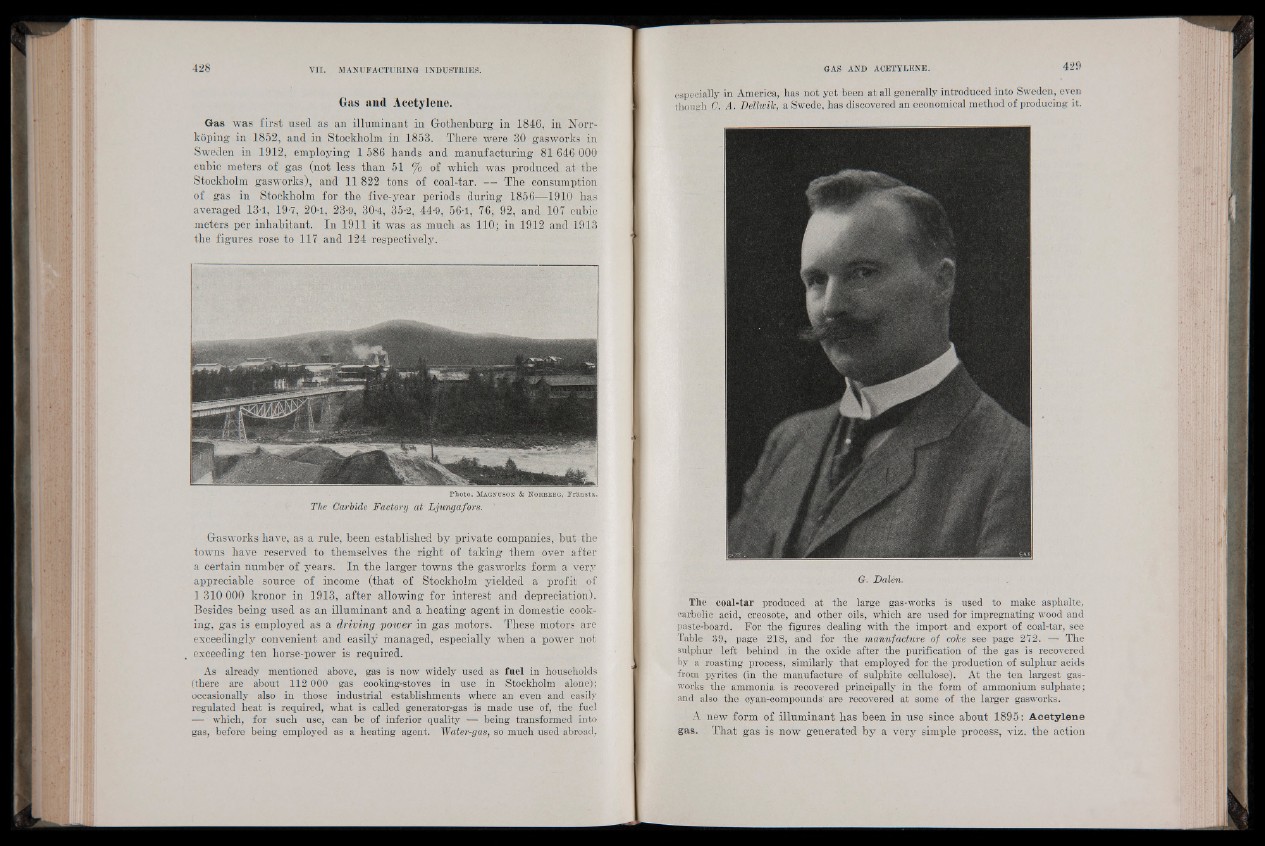
Gas and Acetylene.
Gas was first used as an illuminant in Gothenburg in 1846, in Norr-
koping in 1852, and in Stockholm in 1853. There were 30 gasworks in
Sweden in 1912, employing 1 586 hands and manufacturing 81 646 000
cubic meters of gas (not less than 51 % of which was produced at the
Stockholm gasworks), and 11 822 tons of c o a l - t a r T h e consumption
of gas in Stockholm for the five-year periods during 1856—1910 has
averaged 13-1, 19-7, 20-1, 23-9, 30-4, 35-2, 44-9, 56-1, 76, 92, and 107 cubic
meters per inhabitant. In 1911 it was as much as 110; in 1912 and 1913
the figures rose to 117 and 124 respectively.
P h o to . Ma g nu soîï & N o r b e r g , F r ä n s t a .
The Carbide Factory at Ljungafors. '
Gasworks have,, as a rule, been established by private companies, but the
towns have reserved to themselves the right of taking them over after
a certain number of years. In the larger towns the gasworks form a ver3'
appreciable source of income (that of Stockholm yielded a profit of
1 310 000 kronor in 1913, after allowing for interest and depreciation).
Besides being used as an illuminant and a heating agent in domestic cooking,
gas is employed as a driving power in gas motors. These motors are
exceedingly convenient and easily managed, especially when a power not
exceeding ten horse-power is required.
As already mentioned above, gas is now widely used as fuel in households
(there are about 112 000 gas cooking-stoves in use in Stockholm alone);
occasionally also in those industrial establishments where an even and easily
regulated heat is required, what is called generator-gas is made use of, the fuel
— which, for such use, can be of inferior quality — being transformed into
gas, before being employed as a heating agent. Water-gas, so much used abroad,
especially in America, has not yet been at all generally introduced into Sweden, even
though C. A. Dellwik, a Swede, has discovered an economical method of producing it.
G. DaUn.
The coal-tar produced at the large gas-works is used to make asphalte,
carbolic acid, creosote, and other oils, which are used for impregnating wood and
paste-board. For the figures dealing with the import and export of coal-tar, see
Table 39, page 218, and for the manufacture of coke see page 272. — The
sulphur left behind in the oxide after the purification of the gas is recovered
by a roasting process, similarly that employed for the production of sulphur acids
from pyrites (in the manufacture of sulphite cellulose). At the ten largest gasworks
the ammonia is recovered principally in the form of ammonium sulphate;
and also the cyan-compounds' are recovered at some of the larger gasworks.
A new form of illuminant bas been in use since about 1895; Acetylene
gas. That gas is now generated by a very simple process, viz. the action